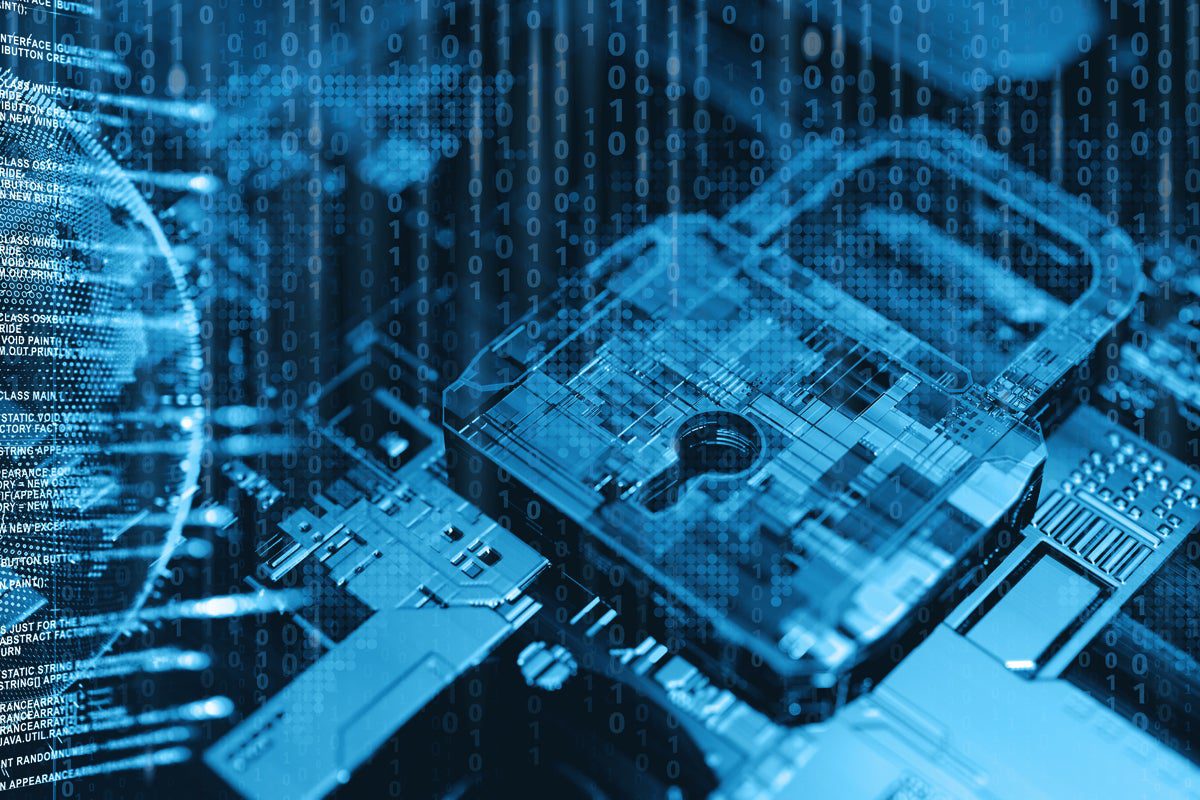Table of Contents
Have you ever wondered how your WhatsApp messages stay private or why your online passwords aren’t floating around the internet? Or maybe these aren’t things you think about at all. Either way, the reason your digital life isn’t an open book is cryptography, the quiet bodyguard working behind the scenes to keep you safe.
People aren’t stealing your data the moment you go online because over 96% of the web pages you visit are protected by cryptographic systems. Yet, for something this important, most people barely know anything about how it works.
So let’s fix that. In this article, we’ll break down what cryptography is, how it works, the different types of cryptography, and the many ways it keeps your digital life secure.
What is Cryptography?

Cryptography is simply the science of keeping information private and protected. It turns readable data into something no one else can understand. In other words, it hides your information in plain sight.
Cryptography makes use of tools like encryption algorithms, mathematical rules, and secure keys to lock your data, and only someone with the right key can unlock it again.
You interact with countless examples of cryptography every single day without noticing it: logging into your email, shopping online, using WhatsApp, or accessing any website that begins with https. These aren’t just features; they’re real-life applications of cryptography that are working silently in the background.
To understand how cryptography achieves all this digital protection, let’s first uncover how it works.
How Does Cryptography Work?
To understand how cryptography works, you would have to imagine your data going through four stages every time you log in, send a message, or make a payment online.
Let’s break it down:
1. Your Device Prepares the Data
Your phone or laptop starts with your readable information, like your password, a message, or your card number. This is called plaintext. Before sending it out to your recipient, the device knows it cannot stay in this readable form.
2. The Data Is Locked Using a Key
Next, your device uses a cryptographic key, a long string of random characters with a specific method (like symmetric, asymmetric, or hashing) to scramble the data.
This scrambling turns your plaintext into ciphertext, which looks like total nonsense to anyone who isn’t you. So, even if a hacker grabs it at this stage, it’s useless. This process is called encryption.
3. The Data Travels Safely
The ciphertext moves across the internet through routers, servers, and networks, but remains unreadable because nobody else has the key needed to unlock it. This is the part most people never see, but it’s where cryptography does the heavy lifting.
4. The Right Person Unlocks It
When the scrambled data reaches the intended recipient:
- Their device uses the correct key
- The ciphertext is reversed
- and the original readable information is restored
This reversal is called decryption.
Types of Cryptography
Modern cryptography is built on four main methods, and each one is designed to protect information differently.
1. Symmetric Key Cryptography
Symmetric cryptography uses a single key to both lock and unlock information. Like sharing one key with a friend to open a secret box, and anyone with the key can access the contents.
This method is fast, efficient, and ideal for encrypting large amounts of data. You’ll see it used in protecting Wi-Fi networks, encrypting files, and securing bulk data in businesses.
2. Asymmetric Key Cryptography
Also called public-key cryptography, this method uses two keys: a public key to encrypt data and a private key to decrypt it. Even if someone manages to intercept the encrypted data, they won’t be able to read it without the private key.
This type is what keeps HTTPS websites, online banking, and email secure. It’s also the backbone of many blockchain systems and digital signatures.
3. Hash Functions
Hashing doesn’t lock and unlock data like the other two methods. Instead, it turns information into a unique code, like a digital fingerprint. Even a small change in the data creates a completely different code.
Hashing is often used to store passwords safely, to check that files haven’t been tampered with, and to verify blockchain transactions.
4. Quantum Cryptography
Quantum cryptography is the newest way to protect data. It uses ideas from quantum physics to make messages nearly impossible for anyone else to read or copy. Though it is still being developed, it is already considered the next level of digital security for really sensitive information.
Applications of Cryptography
We’ve covered the ABCs of cryptography: what it is and how it works. Now, let’s dive into how it is applied in the real world and where it keeps your digital life safe.
1. Secure browsing and Online Communication
Every time you see a padlock icon in your browser’s address bar, cryptography is at work. Websites use secure protocols like HTTPS to scramble the data you send to ensure that hackers can’t read your messages, login details, or payment information. This is one of the most common applications of cryptography you encounter daily.
2. Messaging and End-to-End Encryption
Apps like WhatsApp, Signal, and Telegram use cryptography to keep your conversations private. Messages are encrypted on your device and only decrypted by the recipient’s device, meaning no one, not even the service provider, can read them. These are perfect examples of cryptography in action, protecting personal communication.
3. Military and Government Communications
Cryptography has been protecting military and government secrets for centuries. From coded messages in wartime to today’s digital intelligence, it has always kept sensitive information out of the wrong hands.
Today, governments use cryptography to secure communications, coordinate operations, and protect classified data, making it a key part of national security.
4. Online Transactions and E-Commerce
Every time you make a payment online or transfer money through your bank app, cryptography secures your financial data. Encryption protects credit card details, login credentials, and other sensitive information, keeping it safe from cybercriminals. Without cryptography, online banking and e-commerce wouldn’t be possible.
5. User Authentication and Digital Signatures
Cryptography also helps to verify identities and ensure the integrity of data. Digital signatures, certificates, and Public Key Infrastructure (PKI) systems confirm that the sender is legitimate and that the data hasn’t been altered. This is essential for secure email, legal contracts, and corporate communications.
6. Blockchain and Cryptocurrencies

Blockchain is like a digital notebook that records every transaction, for example, when someone sends Bitcoin to another person. Cryptography is what locks each page of the notebook so that no one can erase or change what is written.
Each transaction is encrypted and linked to the previous one, forming a chain that is very hard to break or tamper with. This means that everyone can trust the system without needing a bank or central authority. Cryptography keeps blockchain and cryptocurrencies secure, transparent, and trustworthy.
Security Considerations on Cryptography
Even the strongest encryption can fail if it is not used properly. To make sure your data stays truly safe, it’s important to understand the key security considerations:
1. Strong Key Management
Your encryption is only as strong as the keys protecting it. Weak, reused, or poorly stored keys can make even the toughest cryptography vulnerable. Always use strong, unique keys and keep them secret.
2. Use Modern Algorithms
Cryptography algorithms keep getting updated, so you should update your apps and systems to match them. Using older algorithms like DES or outdated protocols can mean relying on methods that hackers have already figured out. Modern cryptographic protocols such as AES and RSA are much stronger, harder to hack, and widely trusted for digital security.
3. Manage Human Risk
No system is perfect if humans make mistakes. Sharing passwords, leaving devices unsecured, or falling for phishing attacks can bypass cryptography entirely. Educating yourself and others on safe practices is just as important as strong encryption.
4. Protect Data in Transit
Even if your data is encrypted, it can still be stolen while moving across the internet. Hackers can try to grab it on public Wi-Fi or other unsafe networks. Using secure connections, like HTTPS websites or encrypted apps, keeps your information safe while it travels.
Challenges Associated with Cryptography
1. Cryptographic Attacks
Hackers are always looking for ways to break encryption. One common method is a brute-force attack, where they try every possible key until one works.
Another is a man-in-the-middle attack, where data is intercepted while it’s being sent, allowing attackers to read or even change it if the connection isn’t secure.
There’s also something called a birthday attack. This happens when two different pieces of data accidentally end up with the same digital fingerprint, called a hash. Hackers can take advantage of this to trick systems into thinking the data is legitimate when it’s not.
2. Complexity and Cost
Setting up cryptography properly isn’t simple. It takes expertise, careful planning, and resources. Mistakes in key management, system design, or protocol choice can leave data exposed. For companies and developers, this adds both time and financial costs to maintain proper digital security.
3. Quantum Threats
The rise of quantum computers poses a new challenge. Some encryption methods used today could be broken by powerful quantum computers in the future. This is why researchers are developing post-quantum cryptography, aiming to create encryption that even quantum machines cannot easily crack.
4. Performance Overhead
Encryption uses computing power. If not optimized, it can slow down systems, websites, or apps, especially when handling large amounts of data. Developers need to balance cryptography protection with performance so that apps and websites remain fast without compromising security.
Frequently Asked Questions (FAQs) About Cryptography
1. Is cryptography the same as encryption?
No, they’re not the same. Encryption is one of the main tools of cryptography; it scrambles readable data into a coded format, so only someone with the right key can read it. Cryptography is the whole toolbox that includes encryption as well.
2. How do I know if a website is using cryptography?
To know if a website is using cryptography, look for the padlock icon in your browser’s address bar and “https://” at the start of the web address. This indicates the website uses secure cryptographic protocols like TLS/SSL to protect your data.
3. How is cryptography used in cryptocurrencies?
Cryptography is used to secure every transaction on a blockchain by encrypting and linking each transaction to the previous one. This forms a chain that is very hard to tamper with.
4. Can cryptography be hacked?
Cryptography itself is very hard to break, but it can be hacked if it’s used incorrectly. Weak passwords, outdated algorithms, poor key management, or insecure networks give attackers openings. In most cases, it’s not the cryptography that fails; it’s the way people or systems use it.
5. Do I need to understand cryptography to stay secure?
Not necessarily. You don’t need to know the math or algorithms behind cryptography to be safe. As long as you practice good security habits, cryptography will work silently in the background to keep you protected.
Conclusion
Cryptography may seem like a complex science, but it is simply the invisible shield protecting your digital life. From messaging apps to online banking to blockchain transactions, cryptography works tirelessly to keep your data safe from hackers, eavesdroppers, and cyber threats.
Understanding the different types of cryptography and how they protect data helps you appreciate the security behind the screens you use every day. As technology evolves, cryptography will continue to be the foundation of digital security, silently guarding your online world every day.
Last updated on December 12, 2025

